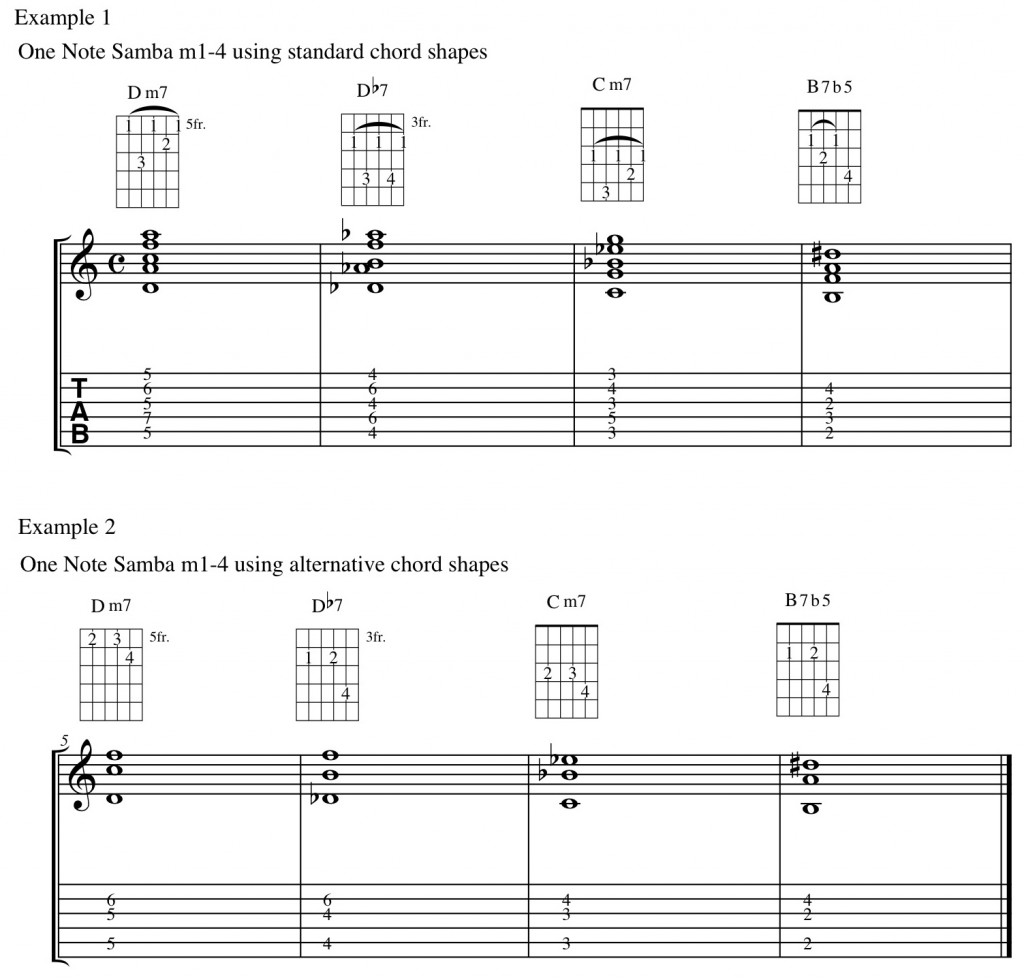Arming ourselves with a good array of chord shapes to equip us for all situations makes playing through chord progressions a lot more satisfying. While it’s true that you can get away with knowing a small handful of chords, you’ll get more out of the music by investigating different shapes. Take the song One Note Samba for instance. There’s a very distinctive downward chord movement in the first four bars- Dm7 to Db7 to Cm7 to B7b5. I’ve given two examples below which you can take a look at. In example one I’m using the standard chord shapes that are found in most chord books. Using standard chord shapes, we have to employ the use of barre chords. While absolutely acceptable, to my ear, the chord movement sounds a bit disjointed and the actual physicalities of the left hand movement feels awkward (even if you are a master at barre chord shapes). In example two I’ve broken away from the standard chord shapes to give a more flowing nature to both the sound of the chord movement and the actual physical shapes employed by the left hand. Now try playing both and have a think about which you find most satisfying. Employing different left hand shapes is not about learning lots and lots of different shapes, it’s about learning the right shapes, nice sounding shapes and having an understanding of how and when to use them. The other benefit of playing “light” shapes is that it gives us more freedom to embellish the chord tones. If the thought of that excites you then come and join my FREE Beyond Tabs guitar course where we can talk further.
